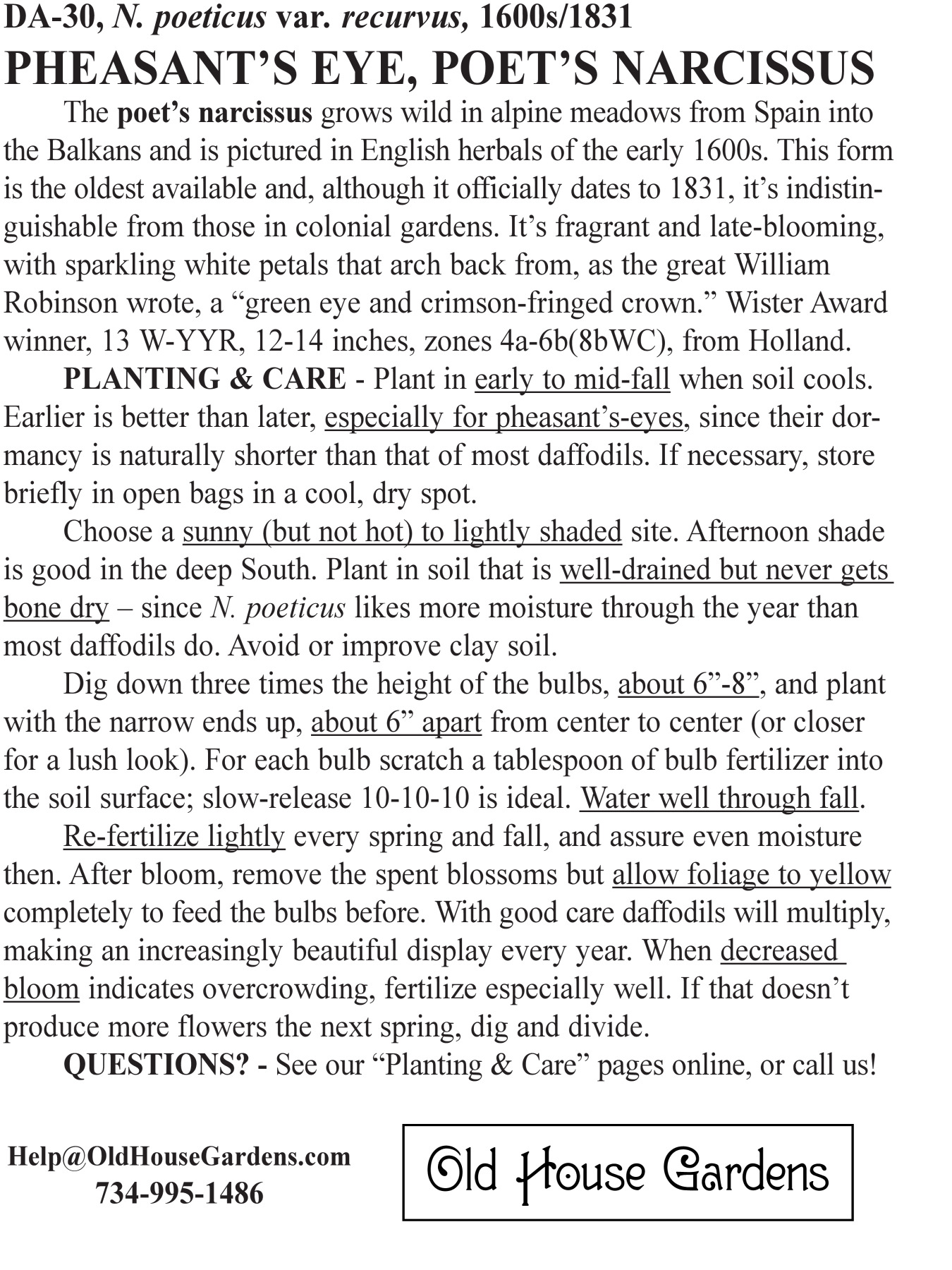|
|

 
|
|
The poet’s narcissus grows wild in alpine meadows from Spain into the Balkans and is pictured in English herbals of the early 1600s. This form is the oldest available and, though it dates officially to 1831, it’s indistinguishable from those in colonial gardens. It’s famously fragrant and late-blooming, with sparkling white petals that arch back from a “green eye and crimson-fringed crown” (William Robinson). Wister Award winner (see more), 13 W-YYR, 12-14”, zones 4a-6b(8bWC), from Holland.
SOLD OUT
|
|
TYPE 13/wild SUB TYPE Division 13, species, poeticus, poet, pheasant's eye, wildflower ZONES 4a-6b(8bWC) HEIGHT 12-14” BLOOM SEASONS very late LIGHT full sun, half sun, light shade |
PLANTING & CAREPlant in mid-fall when soil cools; earlier is better than later. If necessary, store till then in open bags in a cool, dry spot. Choose a sunny to lightly shaded site. Full sun is best in the North, but the further South you garden, the more shade you can give them. (You’ll find additional expert advice for growing daffodils where winters are warm in our “Daffodils for the South and Warm West.”) Plant in well-drained soil. Avoid or improve clay soil, or grow in raised beds. Dig down three times the height of the bulbs, about 6-8 inches for standard varieties, 4-6 for smaller varieties such as ‘W.P. Milner’, and plant with the narrow ends up, about 6 inches apart from center to center (or closer for a lush look). For each bulb scratch a tablespoon of bulb fertilizer into the surface (slow-release 10-10-10 is ideal). Water, and keep moist through the fall while the bulbs are growing new roots, through the winter if the soil doesn’t freeze, and through the spring at least till blooming is finished. Re-fertilize lightly every spring and fall. After bloom, remove the spent blossoms but allow foliage to yellow completely (to feed the bulbs for next year’s bloom) before removing it. IN THE SOUTH, keep soil dry when soil warms up after blooming and through the summer to avoid disease problems. Deer, rodents, and most other pests leave daffodils alone, but if some of yours mysteriously fail to appear in the spring, visit our Daffodil Bulb Fly page to learn about the likely culprit. With good care daffodils will multiply, making an increasingly beautiful display every year. When decreased bloom indicates overcrowding, dig and divide after foliage yellows. Tazetta narcissus are almost as easy to force as their cousins, paperwhites. For simple how-to, see our Forcing Bulbs page. Learn more about growing and enjoying daffodils at our Daffodils Newsletter Archives and Bulbs as Cut-Flowers page. |

|
SPRING
|
· |
SUMMER
|
· |
FALL
|
· |
LEARN MORE
|
· |
ORDERING
|

|










